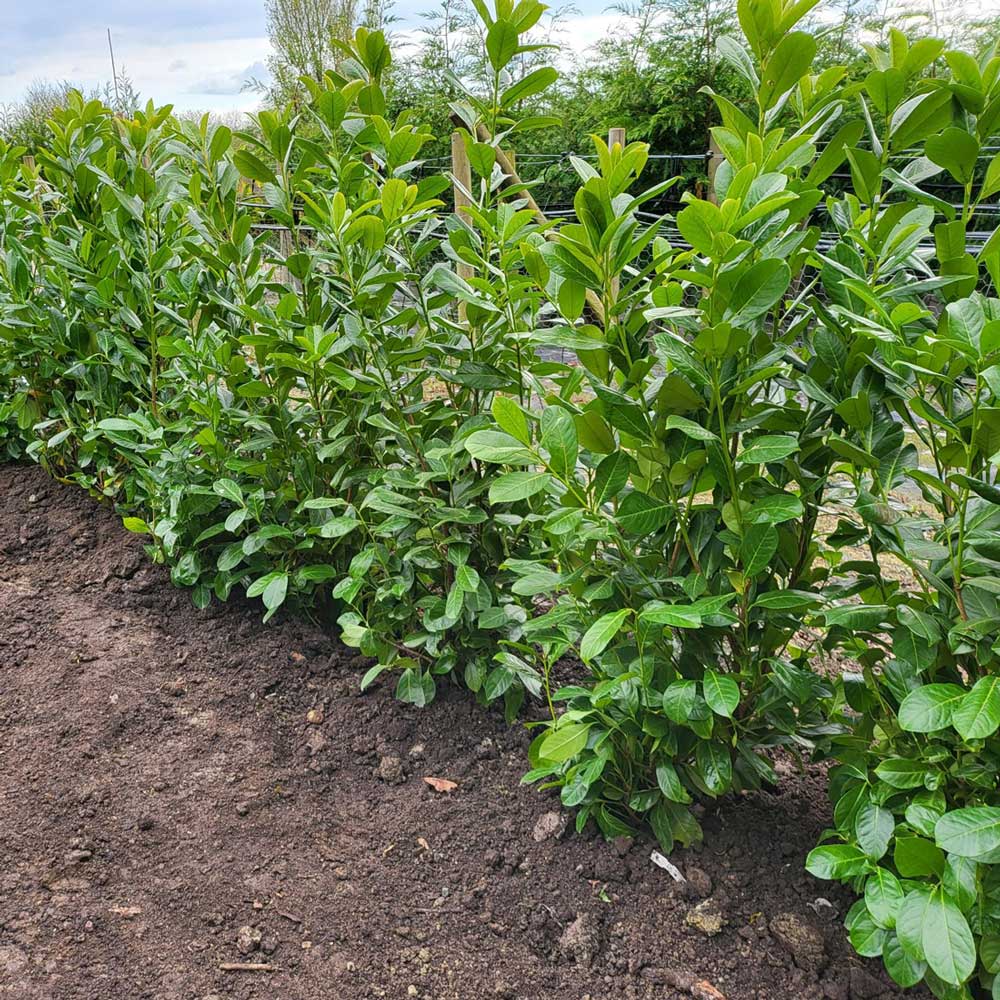Laurel Hedging and Its Ideal Spacing

Getting the spacing right between planting your hedging plants will determine how quickly they join together to form a screen and is vital for your hedge’s growth. Spacing works both ways: it allows adequate growth space for the plants but also allows the hedging plants to become one. When not planted with the right distance between each plant, it can cause gaps in the hedge. Each hedge type requires different spacing – here we are focusing on the Laurel hedging, one of our most popular hedging species.
Laurel hedging (sometimes otherwise known as Cherry Laurel, Common Laurel or English Laurel) is the fastest growing and cheapest non-conifer hedging plant. It is an excellent plant for hedging and screening. Laurel leaves are rounded, glossy, bright green and keep their leaves all year round. It produces masses of white flowers on racemes (a central stem with many flowers on it) in the spring, which are followed by non-edible, red berries that eventually turn black (all of which can be cut off during the annual trim). They can be trimmed into formal box-shaped hedges or they can create a less formal-looking hedge, which needs to be done once or twice a year. Laurel hedging plants will regenerate from old wood if they become overgrown. They grow in full sun or in shade as long as it is watered while it is establishing a root system. Laurel is often seen growing under trees in countryside estates and is excellent at growing in the shade. Under ideal conditions Laurel can grow up to 60cm (2ft) per year. They will grow in most soil types, except shallow, chalky or extremely wet soils. They are hardy down to -20°C, which adds to their versatility in varied conditions, whether it be weather or soil type.
Laurel can be planted at any time of the year; if you plant between March and October, you will need to water the plants until October passes. If you plant from November to February, the plants will have time to establish their root system while the soil is wet over the winter months (although watering them for their first season will usually result in more growth. Laurels provide the most instant hedging, as they are bushy and can create an instant screen if planted close enough to each other. Most hedges should be planted 2-3ft apart, depending on how quick you want the hedge to fill in. If you want a more instant hedge, then plant at 2ft, but if you want a more gradual process, you can achieve an equally as good hedge at 3ft apart. Laurel hedges allow you to go as close as 2 plants per metre (every 50cm) if you want a very instant hedge. The wider the gap between the hedging plants, the longer it will take to merge into a fully-fledged hedge. For instance, if you plant the plants 1 metre apart, you will get as just a good hedge, but it will take about another year to merge to form a complete screen than if you planted them closer together.
To work out the spacing of your hedging plant, please click here to visit our hedge spacing calculator. For more information on hedge spacing, whether it be Laurel or another species, please get in touch with us – we’d love to hear from you!


